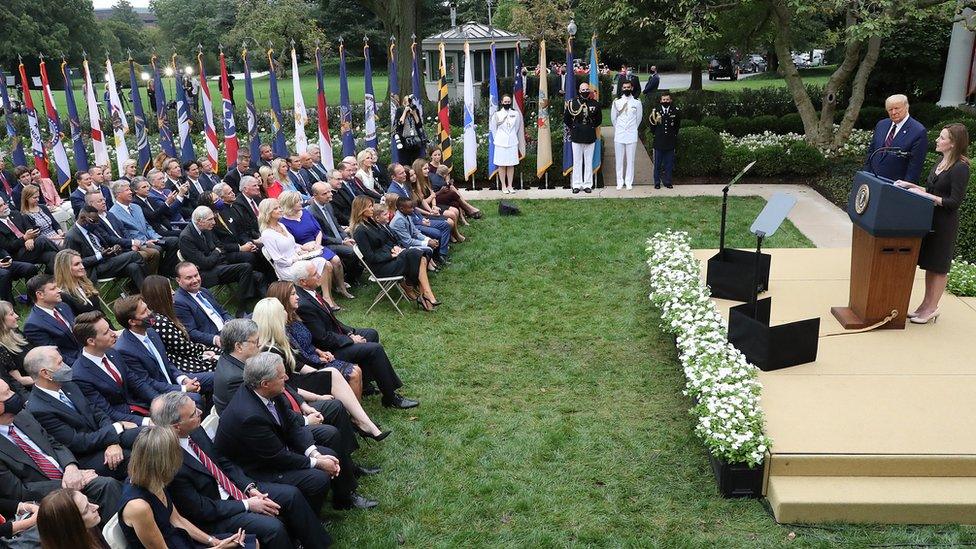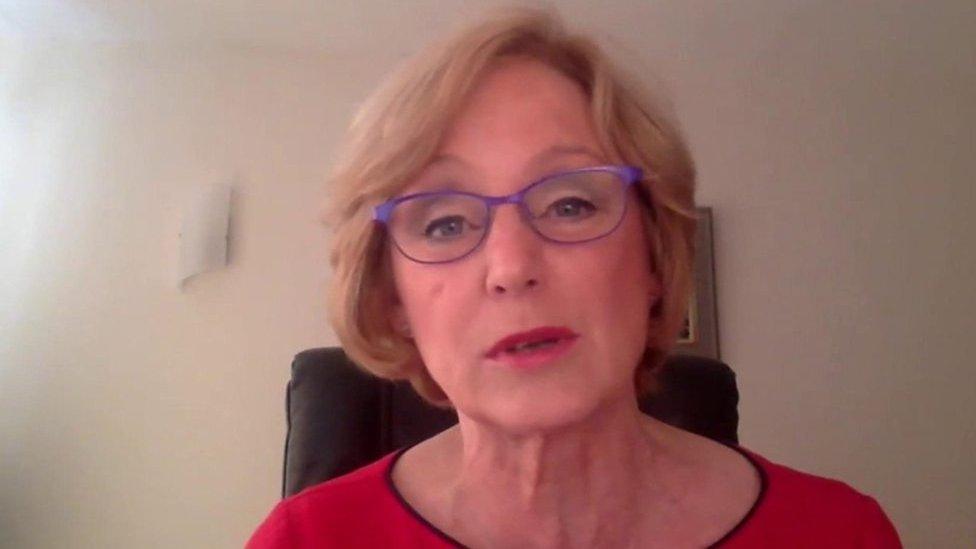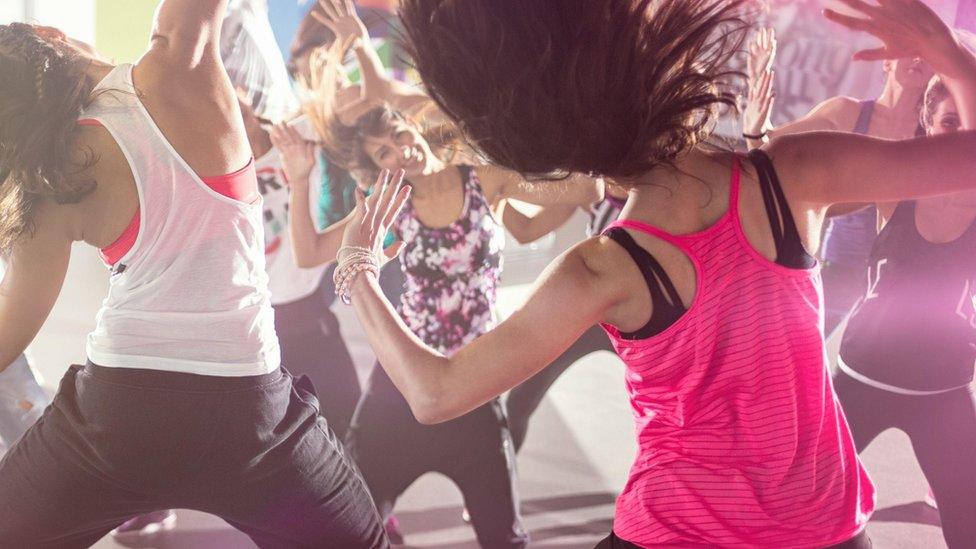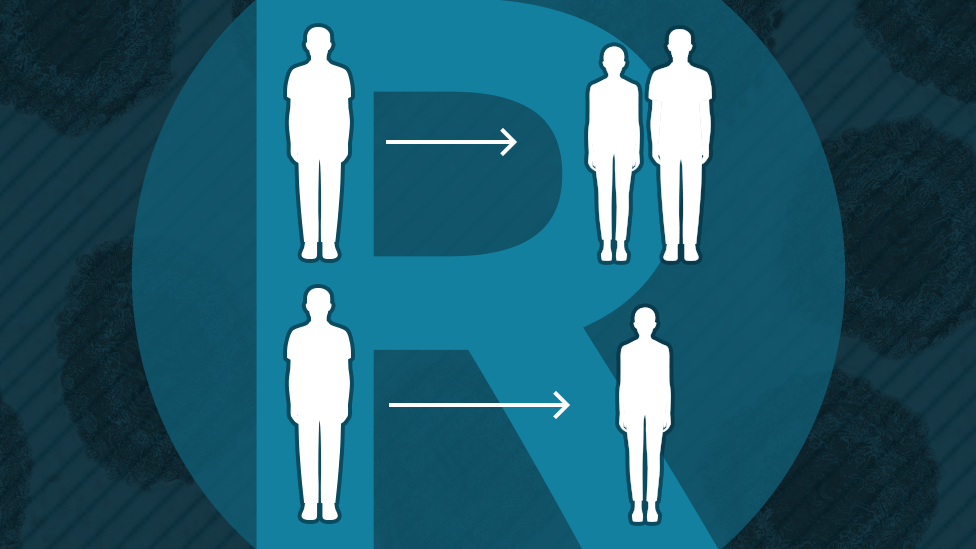Covid test-and-trace: Is backwards contact tracing the way forward?
- Published

The White House reception, branded a superspreading event by virus expert Dr Anthony Fauci
Coronavirus cases are rising all over the world. But some places, like South Korea and Australia, are doing better than others at keeping infections low.
The explanation could lie in the fact that countries are focusing on superspreading events - and using a smart way of doing contact tracing to pinpoint these clusters of cases as they arise.
What is superspreading?
Coronavirus does not spread evenly. Most people who get the virus won’t pass it on to anyone at all. But a small number of people will spread it widely. Scientists estimate as few as 10% of infected people are responsible for 80% of infections.
These clusters of cases are known as superspreading events.
What makes a superspreading event partly depends on what people are doing, how many are in the room and how close they are, says Prof Dame Anne Johnson, president-elect of the Academy of Medical Sciences. But also "some people do just excrete more virus," she says. This is either down to the stage the disease is at, or because "some people produce more droplets than others".
Perhaps the most notorious Covid superspreading event was at the White House Rose Garden in October. One person is thought to have infected at least 11 others, including Donald Trump.
How can contact tracing help?
Contact tracing is about detective work - and there are different ways to do it.
If a person tests positive, forward contact tracing means finding all the people they could have passed the virus on to, and asking them to self-isolate. For backwards contact tracing, the aim is to find who gave the virus to the person who tested positive.
The theory is that if they have already passed on the virus, they're more likely to have infected other people as well, because of how superspreading works. Then their contacts are found, and asked to self-isolate, too.
If the effort is just on going forward, then "potentially a lot of cases won't have infected people", said Dr Adam Kucharski, of the London School of Hygiene and Tropical Medicine. The result is a big part of the outbreak will be missed, he says. But because cases are often linked to superspreading events, going backwards could pick up infections that might otherwise be missed.
“Modelling we did, external estimated that looking backwards as well as forwards could prevent two or three times more infections, and hence transmissions, than it would by just looking forward alone.”
Where has backwards contact tracing worked?
South Korea and Japan have concentrated on finding superspreading events since the early days of the pandemic. Australia has also adopted a rigorous backwards contact-tracing approach to keep coronavirus cases low.
Forward contact tracing is immediate and "high-yield", and should be the first priority, says Dr Anthea Katelaris, an Australian field epidemiologist. “But backwards contact tracing is required if you're aiming for low or no community cases.”

The new coronavirus spreads more easily between people in indoor, poorly ventilated environments
The approach, she says, has helped to identify coronavirus clusters and stop them from spreading further.
She cites a real example of a person who had developed Covid having been to a restaurant. Following up with the restaurant, her team identified another case that had occurred earlier.
"After that, we were able to identify a number of other people who'd been at the restaurant at the same time. Altogether there were more than 10 other cases linked to that restaurant, and so we were able to limit spreading those other chains of transmission.”
What about the UK?
Backwards contact tracing is being used in the UK to uncover some Covid clusters, for example in meatpacking plants and other workplaces. But the number of current cases makes it more difficult.
The effectiveness of contact tracing drops quickly, as soon as there are larger numbers of infections, says Dr Kucharski.
But scientists say backwards tracing should be used routinely, especially in areas where infection numbers are lower.
“There is a huge development in the infrastructure that the UK now has, in the ability to do tests, in having a contact-tracing app that can link people to venues. But it's really making sure that that's used as effectively as possible,” says Dr Kucharski.
Why it's important to know where superspreading is?
Locating clusters of coronavirus isn’t just useful for stopping transmission. Backwards tracing is also essential for identifying the settings, the environments, where superspreading is happening, says Dr Muge Cevik, an infectious-disease specialist at the University of St Andrews.
“Generally, what we're seeing is [clusters] happen in indoor, poorly ventilated environments... nightclubs, pubs, restaurants and family gatherings - birthdays, congregations in churches and weddings.”
Understanding this can help inform policy decisions, she says.
“This could give us a much more targeted approach. So we need to concentrate on limiting these large clusters and superspreading events. And we could also, on the other side, open up safer environments for people, such as well-ventilated indoor spaces and outdoor meeting spaces.
“We will need to learn how to live with the virus, and we can't just think about lock down or open up - there is a much more nuanced approach in-between.”
Follow Rebecca on Twitter , external
Related topics
- Published10 October 2020

- Published19 May 2020

- Published6 June 2020

- Published26 March 2021
